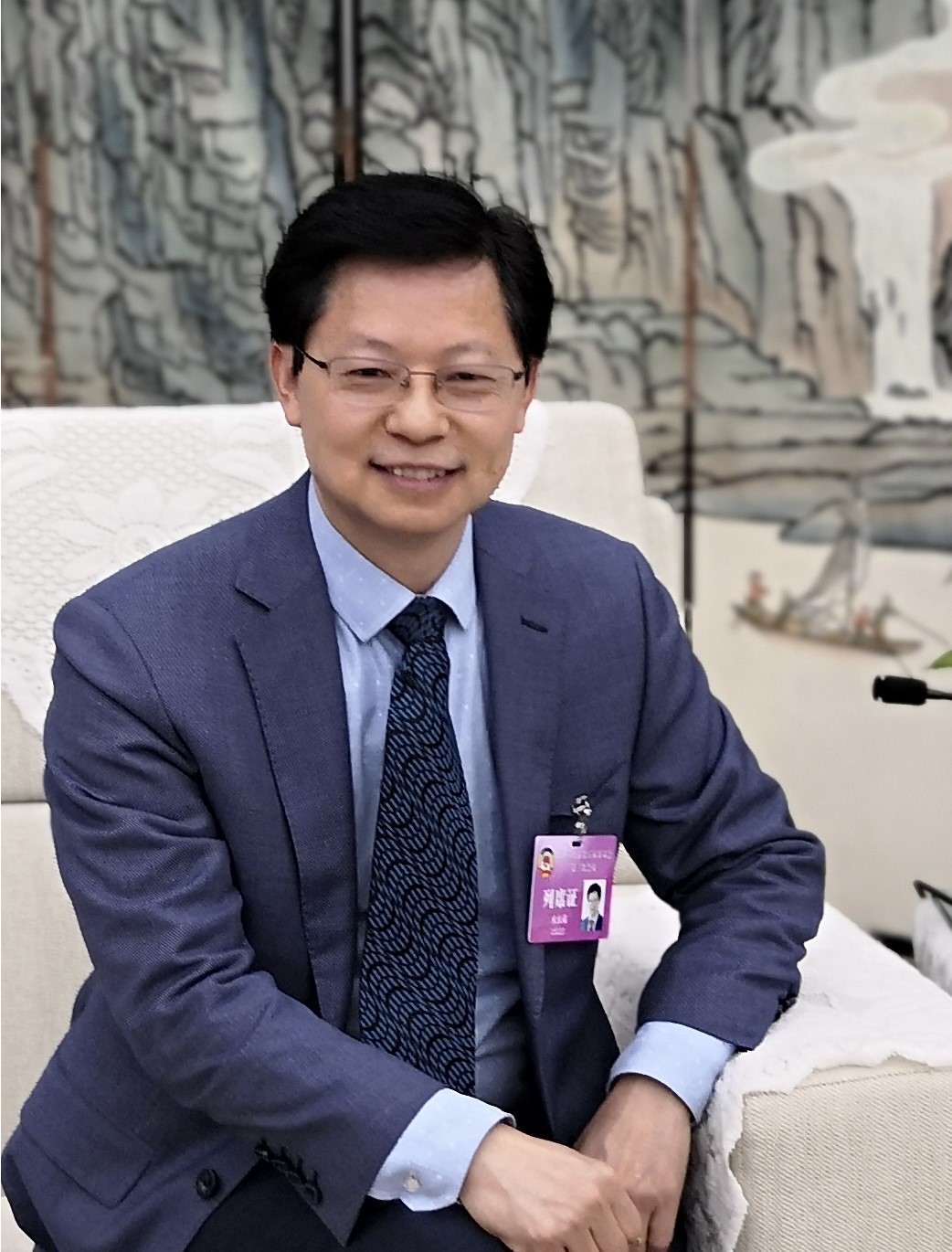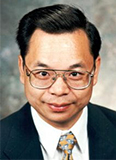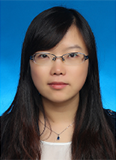
Keynote Speakers
 | Prof. Shengli Xie IEEE Fellow, Foreign Member of the Russian Academy of Engineering, Recipient of the National Science Fund for Distinguished Young Scholars of China, Guangdong University of Technology, China Dr. Shengli Xie is a Distinguished Professor under the “Hundred Talents Program” at the School of Automation, Guangdong University of Technology. He serves as a doctoral supervisor and the director of the Institute of Intelligent Information Processing. Additionally, Dr. Xie holds several prestigious titles and awards, including Foreign Member of the Russian Academy of Engineering, Recipient of the National Science Fund for Distinguished Young Scholars of China, Winner of the National Natural Science Award, Recipient of the Ho Leung Ho Lee Foundation Science and Technology Progress Award, Leader of Academic of the Ministry of Education’s Innovation Team, Leader of the “Huang Danian-style” national teaching team, National-level leader in Guangdong Province’s “Thousand, Hundred, and Ten Talent Project,” IEEE Fellow, and a Highly Cited Researcher (Elsevier). Dr. Xie also holds prominent roles such as the President of the Greater Bay Area Association of Artificial Intelligence and Automation, Director of the Ministry of Education Key Laboratory of Intelligent Detection and Manufacturing IoT, Director of the Guangdong-Hong Kong-Macao Joint Laboratory of Intelligent Discrete Manufacturing, Director of the National “111” Center for Discipline Innovation and Talent Introduction, Director of the Guangdong Key Laboratory of IoT Information Technology. He is also an associate editor for several IEEE journals, including IEEE Transactions on Neural Networks and Learning Systems (NNLS), IEEE Transactions on the Internet of Things (IoT), and IEEE Transactions on Systems, Man, and Cybernetics (SMC). His notable recognition has been marked by numerous prestigious accolades. In 1993, the Hubei Provincial Government recognized him as an “Outstanding Middle-aged and Young Expert of Hubei Province.” In 1996, he was selected as the inaugural “Cross-century Academic Leader” of Hubei Province. In 1998, he was appointed as a provincial-level leader in Guangdong Province’s “Thousand, Hundred, and Ten Talent Project.” In 2002, he garnered multiple honors from the Ministry of Education, being named an “Outstanding Cross-century Talent” and recognized as an “Outstanding Backbone Teacher of National Higher Education Institutions.” By 2004, his expertise earned him the status of a national-level leader within Guangdong Province’s talent initiative. In 2006, he was awarded the title of “National Excellent Scientific Worker” and he was appointed as the academic leader of the Ministry of Education’s Innovation Team in 2007, a role he successfully maintained with continuous support until 2014. Dr. Xie has a long-standing dedication to teaching and research in the fields of communication, control, and signal processing. His primary research interests include intelligent information processing, high-precision satellite navigation and positioning, precision optical detection and imaging, and high-end medical instruments and systems. He has led more than 30 major national and provincial research projects including the Ministry of Science and Technology (MOST), the Ministry of Industry and Information Technology (MIIT), the National Development and Reform Commission (NDRC), the National Science Fund for Distinguished Young Scholars, Key Projects of the National Natural Science Foundation of China (NSFC), major technology breakthrough projects for the Guangdong-Hong Kong-Macao region, innovation teams funded by the Ministry of Education (MOE), and Natural Science Innovation Teams in Guangdong Province. He has been awarded the National Natural Science Second Prize and the Science and Technology Progress Award of the Ho Leung Ho Lee Foundation, among others, with over seven provincial and ministerial awards of first-class. Dr. Xie has published more than 700 academic papers and authored four monographs through esteemed publishers such as Science Press and Tsinghua University Press. Title:New High-Precision Deformation Measurement Method in Optical Coherence Tomography Driven by Artificial Intelligence Abstract: Composite materials, renowned for their high strength, heat resistance, and low density, witness extensive applications in critical load-bearing components of advanced equipment. In catering to the elevated demands for handling more complex loads, higher load capacities, extended service life, and enhanced safety, it is essential to engage in scientific research into the mechanical properties and failure mechanisms of these materials. This necessitates advanced optical measurement technologies to accurately capture both surface and internal strength and damage evolution of composites. The phase-contrast optical coherence tomography (PC-OCT), boasting nanoscale sensitivity, stands at the forefront of deformation measurement techniques worldwide. However, its effectiveness is hindered by limitations inherent in traditional information processing technologies, specifically the “resolution constraints," “limited measurement accuracy,” and “low signal-to-noise ratio (SNR)” issues, which represent major global challenges in this field. The prevailing international solutions focus on hardware enhancements, such as expanding the bandwidth of light sources. Yet, these methods grapple with integration difficulties and fall short of fundamentally addressing the aforementioned bottlenecks. Thus, there is a pressing need to explore innovative high-performance PC-OCT measurement methods based on cutting-edge information processing technologies. The adoption of artificial intelligence (AI) algorithms in tomographic measurement offers a promising avenue. By leveraging extensive experimental and simulation data, AI can accurately learn the time-frequency domain characteristics of tomographic interference signals devoid of complex physical modeling, potentially overcoming the current measurement performance limitations. This report plunges into the integration of “data perception, cognitive analysis, and hardware-software fusion” and capitalizes on physical models and data-driven approaches, culminating in novel intelligent tomographic measurement methods. These include high-resolution tomographic reconstruction using deep convolutional neural networks (CNNs), high-precision phase unwrapping based on digital twin structures in composite networks, and high SNR strain computation using Bayesian networks for uncertainty learning. Moreover, we have developed a new generation of high-performance measurement instruments embedded with AI computation capabilities. |
| Prof. Yong-Duan Song IEEE/AAIA Fellow, Fellow of International Eurasian Academy of Sciences, and Fellow of Chinese Automation Association, Chongqing University, China Professor Yong-Duan Song is a Fellow of IEEE, Fellow of AAIA, Fellow of International Eurasian Academy of Sciences, and Fellow of Chinese Automation Association. He was one of the six Langley Distinguished Professors at National Institute of Aerospace (NIA), USA and register professional engineer (USA). He is currently the dean of Research Institute of Artificial Intelligence at Chongqing University. Professor Song is the Editor-in-Chief of IEEE Transactions on Neural Networks and Learning Systems (TNNLS) and the founding Editor-in-Chief of the International Journal of Automation and Intelligence. Title:Neural Network (NN) Driven Control: Stability and Reliability Abstract:Neural networks and related learning algorithms are crucial components of artificial intelligence. The utilization of neural networks combined with learning algorithms for controller design has become a mainstream direction in the field of intelligent control. This talk will examine the typical NN driven design approaches and expose several critical issues related to trustworthiness and effectiveness of the NN based control methods. |
| Prof. Simon X. Yang University of Guelph, Canada Prof. Simon X. Yang received the B.Sc. degree in engineering physics from Beijing University, China in 1987, the first of two M.Sc. degrees in biophysics from Chinese Academy of Sciences, Beijing, China in 1990, the second M.Sc. degree in electrical engineering from the University of Houston, USA in 1996, and the Ph.D. degree in electrical and computer engineering from the University of Alberta, Edmonton, Canada in 1999. Prof. Yang joined the School of Engineering at the University of Guelph, Canada in 1999. Currently he is a Professor and the Head of the Advanced Robotics & Intelligent Systems (ARIS) Laboratory at the University of Guelph in Canada. Prof. Yang has diversified research expertise. His research interests include intelligent systems, robotics, control systems, sensors and multi-sensor fusion, wireless sensor networks, intelligent communications, intelligent transportation, machine learning, and computational neuroscience. He has published over 550 academic papers, including over 350 journal papers. Prof. Yang he has been very active in professional activities. Prof. Yang has served as the Editor-in-Chief of Intelligence & Robotics, and some other journals; and an Associate Editor of IEEE Transactions on Cybernetics, IEEE Transactions on Artificial Intelligence, and several other journals. He has been involved in the organization of many international conferences. Title:Biologically Inspired Approaches to Real-time Escape and Rescue of Multiple Robotic Systems Abstract:Biologically inspired escape and rescue are growing areas of research that draws inspiration from advantageous biological strategies, mechanisms, and structures for the development of intelligent robotic systems that can autonomously escape from threats and rescue targets. The biologically inspired robotics methodologies comprise promising solutions that would significantly improve the efficiency of system performance, flexibility in dynamic environments, and robustness to various uncertainties. This talk will focus on our studies on real-time collision-free escape and rescue of multi-robot systems in complex and changing environments. Firstly, a novel evasion strategy is designed for multiple evaders against a faster pursuer in complex and changing environments, where an innovative neurodynamics-based approach is proposed to approximate the pursuit-evasion game, instead of the differential games. In comparison to conventional approaches, the proposed approach is capable of providing real-time responses to sudden changes in complex dynamic environments. Secondly, a collective escape approach is designed for multi-robot systems to leave away from threats based on their limited sensing ability alone. The proposed neurodynamics-based self-adaptive mechanism enables multi-robot systems with the self-adaptive ability to adapt the environmental changes. Finally, a multi-robot rescue framework is designed for cooperative rescue in complex changing environments. The proposed approach can generate collision-free rescue trajectories. In addition, a feature learning approach is incorporated with a neurodynamics-based approach and reduces its computation complexity. |
| Prof. Qiuyue Nie IEEE Senior Member, winner of the National Natural Science Foundation Outstanding Young Fund, Harbin Institute of Technology, China Dr. Qiuyue Nie, professor of the School of Electrical Engineering and Automation, Harbin Institute of Technology. She is a winner of the National Natural Science Foundation Outstanding Young Fund, and was selected as the academic leader of the Young Scientist Studio of Harbin Institute of Technology. She received B.Sc. in electronic science and technology (2005) and Ph.D. in plasma physics (2010) at Dalian University of Technology, and a visiting graduate student at Loughborough University, UK, in the period; and then Postdoctoral Research Fellow at Tsinghua University. Her research interests include interactions between plasmas and electromagnetic waves and their applications. Dr. Nie is a senior member of IEEE, committee member of Plasmas & Their Applications Committee and vice chairman of the Youth Working Committee of China Electrotechnical Society. She was also a member of the Editorial Board of Plasma Science and Technology, Chinese Physics B, Chinese Physics Letter and Acta Physica Sinica. She can be touched at nieqiuyue@hit.edu.cn. Title: Advanced electromagnetic regulation by plasma technology Abstract: As a special electromagnetic medium, the plasma exhibits unique electromagnetic characteristics. The electromagnetic parameters of plasma (such as dielectric constant, refractive index, etc.) not only have broadband bands with continuous adjustable characteristics, but also can be changed dramatically by the continuous variation of external parameters. For example, the application of magnetic field will lead to dielectric constant anisotropy, and the continuous variation of plasma density will make the dielectric constant transit from positive to negative. And thus, the electromagnetic regulation by plasma technology shows a good application prospect in the fields of plasma stealth, electromagnetic protection, extreme electromagnetic environment reliable communication, microwave antenna electromagnetic radiation modulation, and etc. In the presentation, the research progress of our group in the basic theory and applied technology of advanced electromagnetic regulation by plasma technology will be introduced briefly. |



